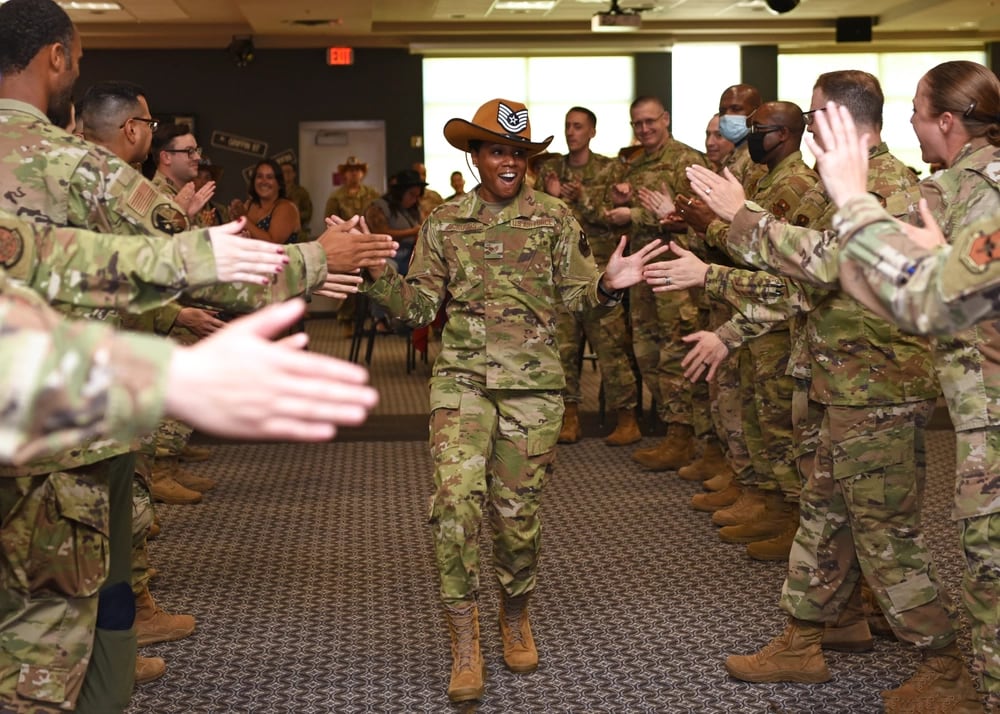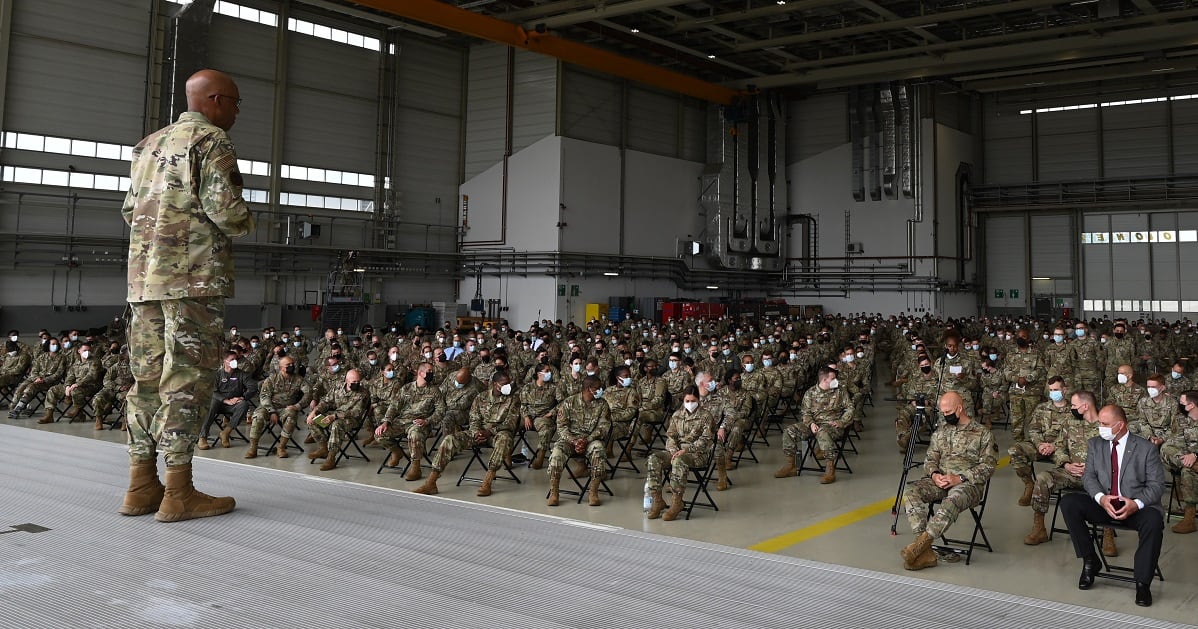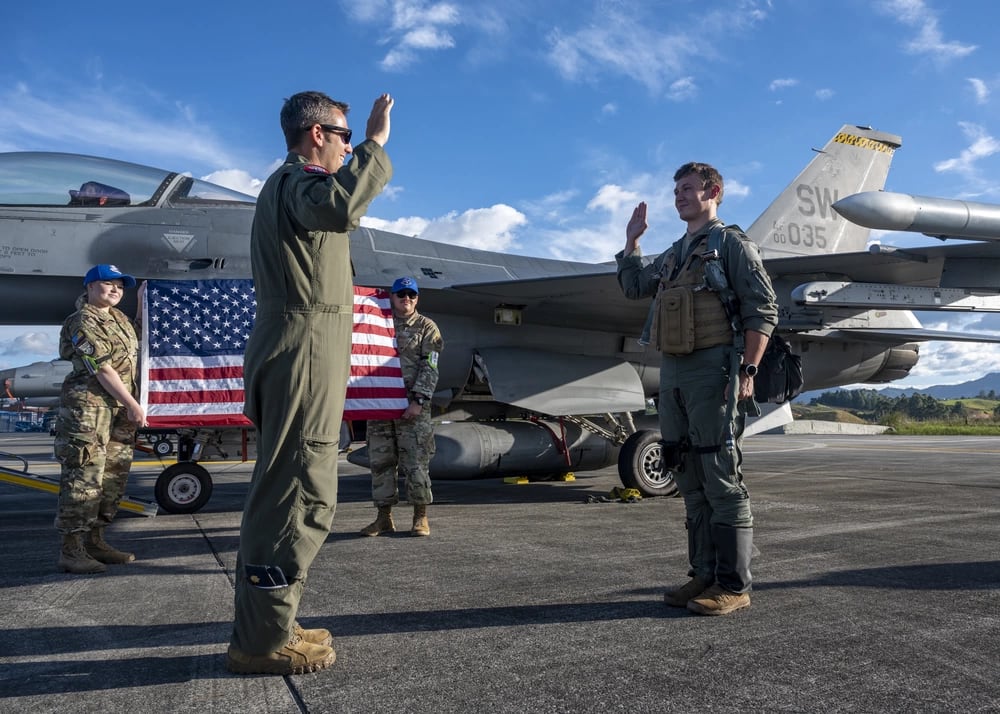Promotions to Air Force colonel this year remained as competitive as they were in 2021, and even more so for those trying to move up later than usual.
About one-third of eligible lieutenant colonels — 555 of nearly 1,800 — were tapped to pin on the full bird in the latest selection round, according to Air Force Personnel Center data released July 27.
The vast majority of those earned a promotion at 22 years of military service and three years in grade, known as on-time or “in-the-zone” selection. Around half of the lieutenant colonels up for an in-the-zone promotion received one — almost exactly the same as in 2021, the Air Force said.
RELATED

In contrast, just 40 of the 840 lieutenant colonels who tried to move up one year later than their peers, known as “above-the-zone” promotions, were chosen to become colonels. That amounts to less than 5% of selectees, compared to nearly 7% last year.
Promotion statistics are slightly higher than in 2020, the last year of a “below-the-zone” process that let airmen advance before a certain number of years in service or in grade. Officials ended below-the-zone promotions to give airmen more time to develop their skills at a particular rank instead of fast-tracking promising candidates.
The competition to make colonel was held in the spring, about three months early, to better match up with when colonels receive job assignments, said Col. Scott Arcuri, head of the Air Force’s selection board secretariat, in an August 2021 press release.
RELATED
“Previously, the design of our promotion system selected the best and fully qualified officers to the next higher grade, agnostic of requirements,” Air Force spokesperson Tech. Sgt. Deana Heitzman said. “Increasing developmental categories allows the Air Force to promote the best and fully qualified … to meet requirements better.”
That means the service can promote as many people as it needs in a particular career field, independent of staffing in other jobs. Its categories span air operations and special warfare; nuclear and missile operations; information warfare; combat support and force modernization.
A previous category for space-related jobs disappeared once the Space Force began handling its own promotions.
RELATED

This is the first round of promotions that has considered prospective colonels in the newest category, dubbed “cross-functional operations” or “LAF-X,” that was created in July 2021.
“The new category consists primarily of foreign area officers who now have their own Air Force specialty code,” Arcuri said. “LAF-X consists of only majors and above.”
Foreign area officers become specialists in a particular country and region of the world, through studying history, politics and culture, language immersion and by living abroad.
Twelve of nearly 40 airmen who were considered for promotion under the new category, either on or behind schedule, were picked to become colonels.
RELATED

Here’s how colonel selection played out in the other career fields:
- Air operations and special warfare
- 2022: 56.7% in the zone (287 of 506 considered); 4.3% above the zone (15 of 351 considered)
- 2021: 56.1% in the zone (277 of 494 considered); 6.6% above the zone (20 of 301 considered)
- Nuclear and missile operations
- 2022: 58.8% IPZ (10 of 17); 0 of 24 chosen APZ
- 2021: 53.3% IPZ (8 of 15); 4.2% APZ (1 of 24)
- Information warfare
- 2022: 48.8% IPZ (62 of 127); 4.6% APZ (8 of 173)
- 2021: 48.3% IPZ (70 of 145); 6.8% APZ (10 of 147)
- Combat support
- 2022: 55.6% IPZ (84 of 151); 4.2% APZ (7 of 167)
- 2021: 55.9% IPZ (104 of 186); 6.1% APZ (8 of 131)
- Force modernization
- 2022: 59.1% IPZ (55 of 93); 6.9% (6 of 87)
- 2021: 58.5% IPZ (55 of 94); 9.6% APZ (7 of 73)
Rachel Cohen is the editor of Air Force Times. She joined the publication as its senior reporter in March 2021. Her work has appeared in the Washington Post, the Frederick News-Post (Md.), Air and Space Forces Magazine, Inside Defense, Inside Health Policy and elsewhere.




